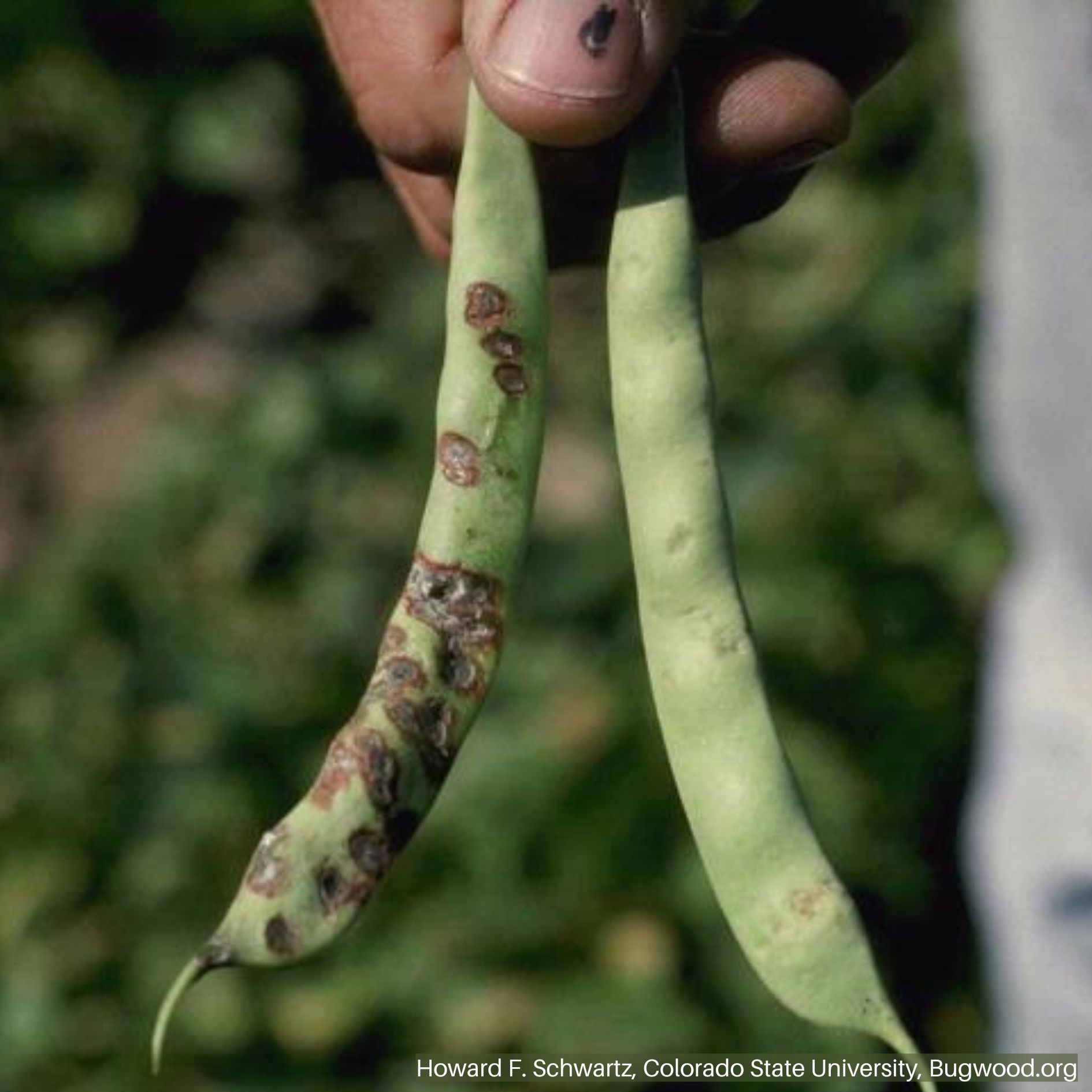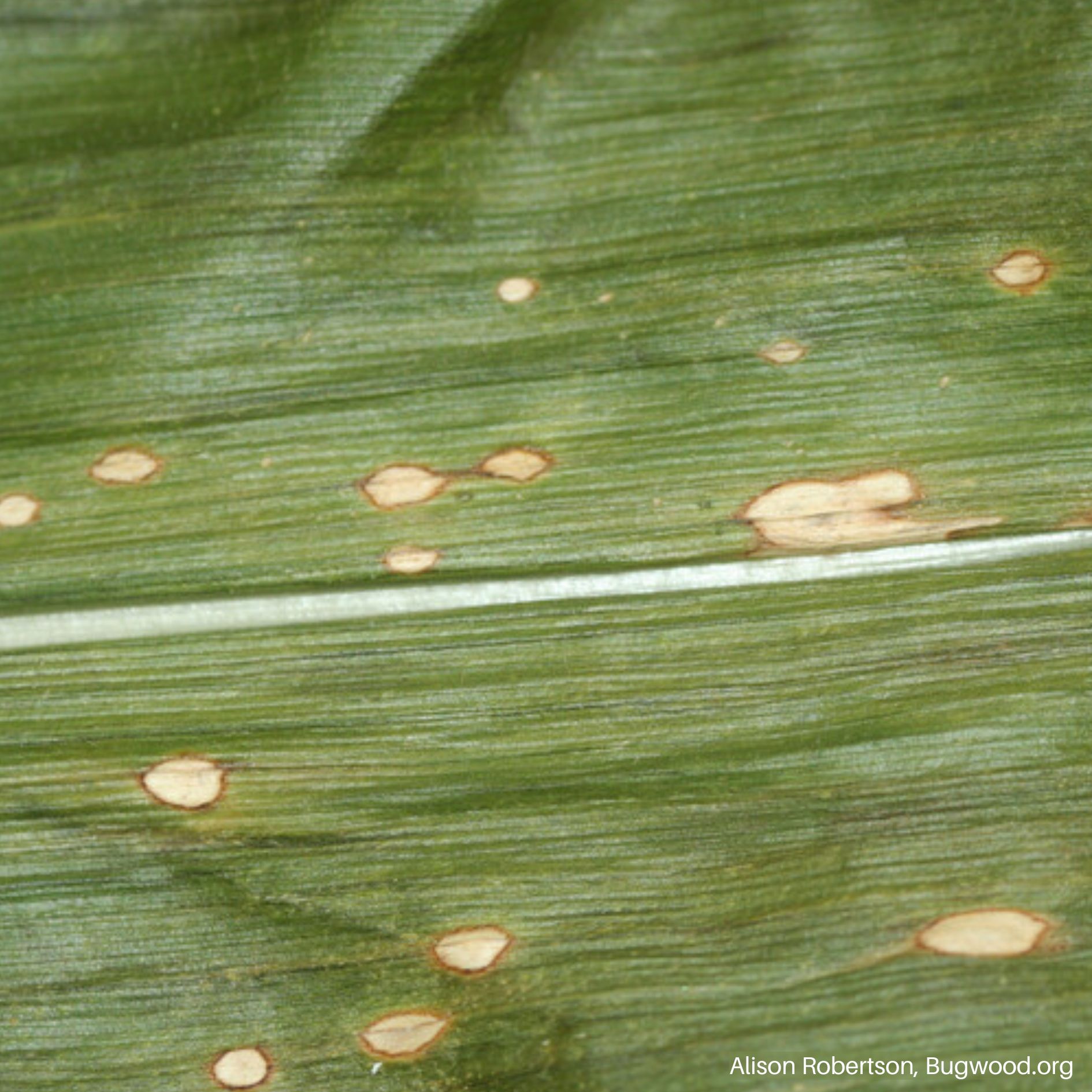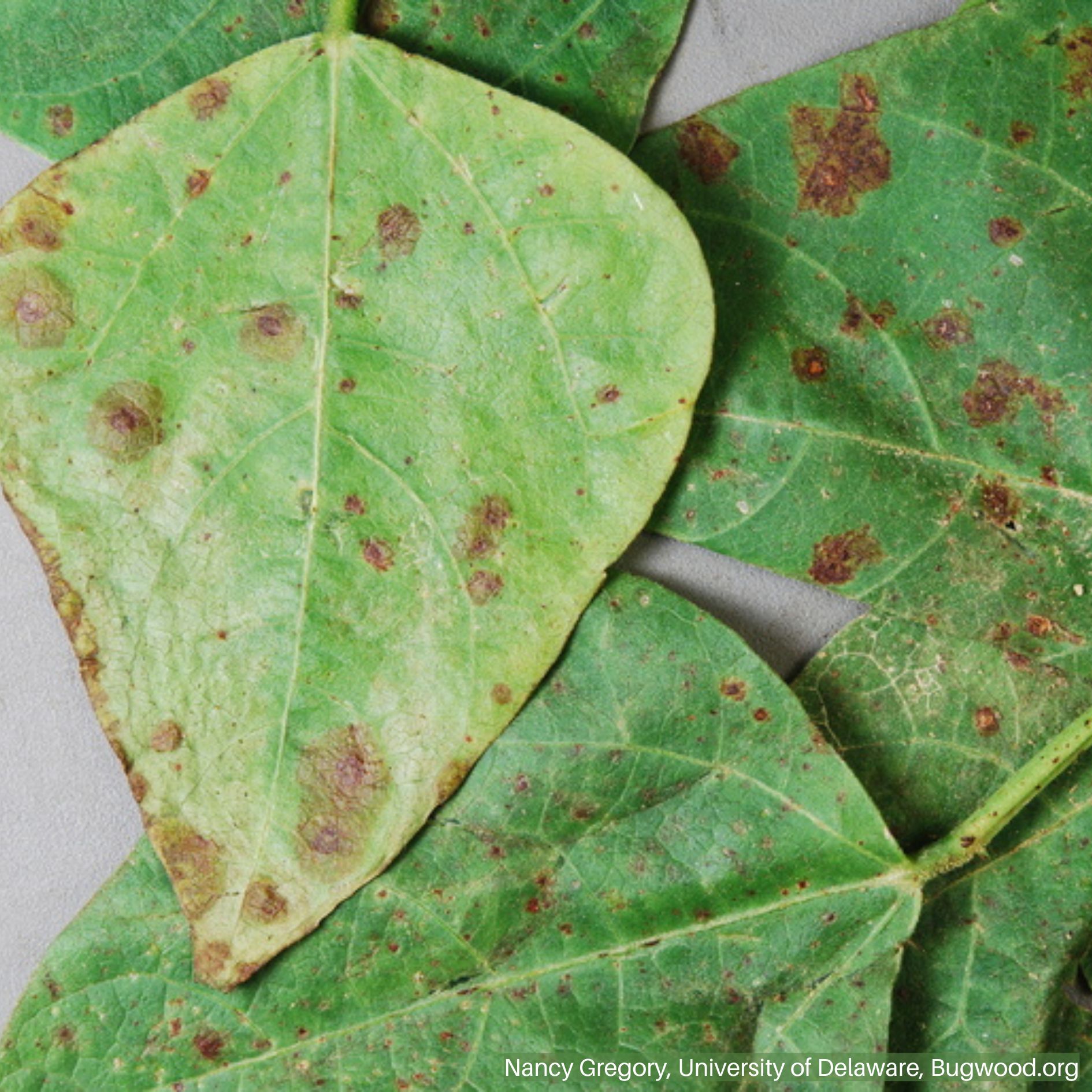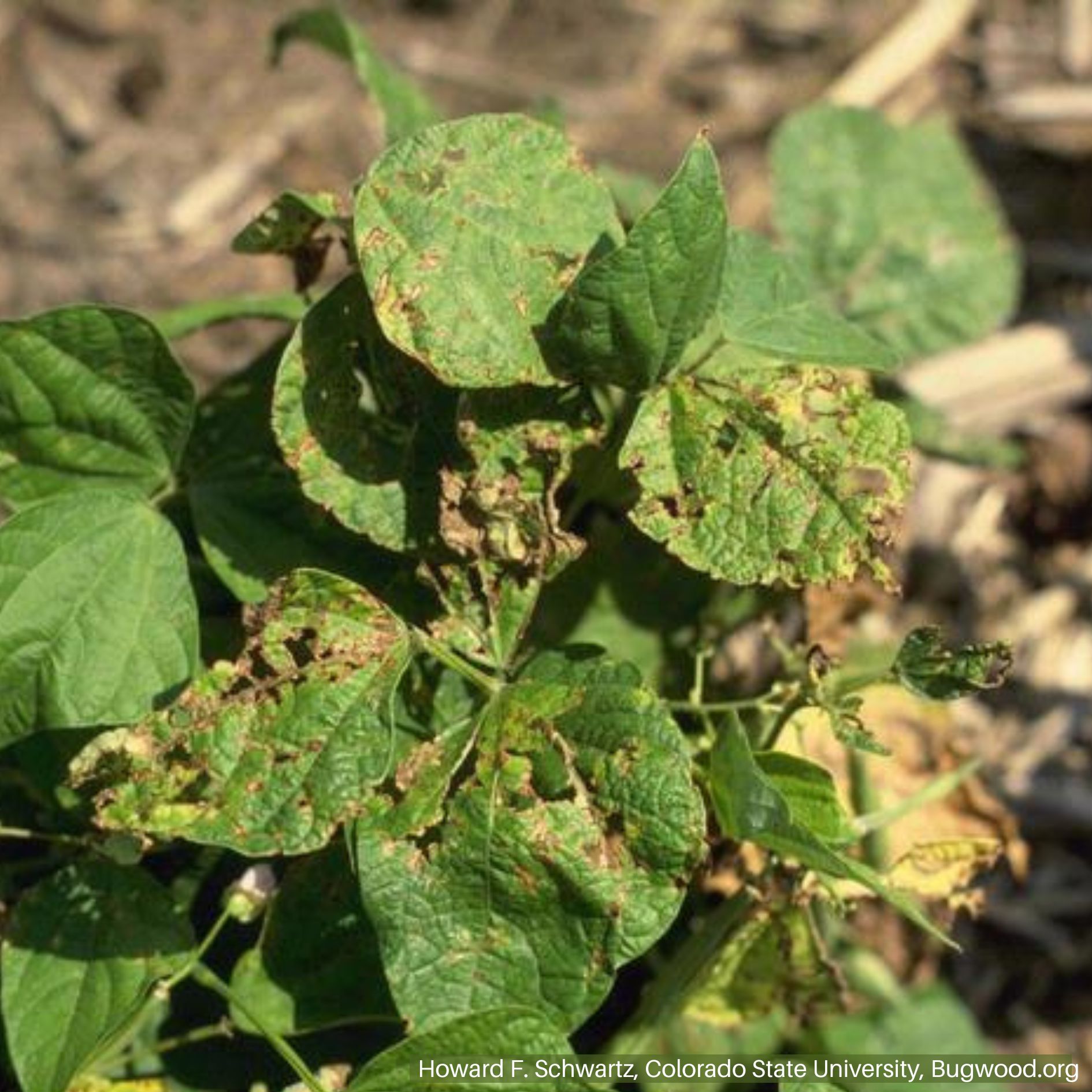Bacterial Brown Spot (Pseudomonas syringae pv. syringae)
 Lesions on bean pods
Lesions on bean pods Corn Leaf with Brown Lesions
Corn Leaf with Brown Lesions Necrotic Spots on Lima Bean Foliage
Necrotic Spots on Lima Bean Foliage Bean Plant with Foliar Symptoms
Bean Plant with Foliar Symptoms HOSTS
- Legumes
- Corn
- Ornamentals
DESCRIPTION
Bacterial brown spot of legumes is caused by the bacteria Pseudomonas syringae pv. syringae. P. syringae is known to cause many plant diseases in many types of crops, however the Pseudomonas syringae pv. syringae. is specific to legumes, corn, and ornamental crops.
BIOLOGY
Pseudomonas syringae pv. syringae is primarily spread to new hosts through infected crop debris. It can also be introduced to new areas through the use of infected seeds.
The bacteria will first colonize the outer surfaces of the host plant as an epiphyte. The bacteria will not cause disease to the host plant at this stage. The host plant is considered infected once the bacteria enter the plant either through the stomata or wounds. P. syringae will then reproduce in the extracellular space of plant cells. Bacterial ooze can be secreted from the lesions and other infected tissue, which can then be spread to other plants through water, insects, or contaminated tools.
SYMPTOMS
- Round spots of necrotic tissue with yellow halos on foliage and pods
- On foliage, the center of the lesions may fall out, causing foliage to seem tattered
- As the disease progresses, the spots will grow together, often following the veins on the leaves
GENERAL MANAGEMENT
- Use certified disease-free seeds
- Rotate legumes with non-susceptible crops

